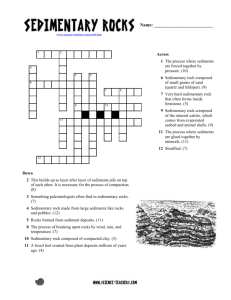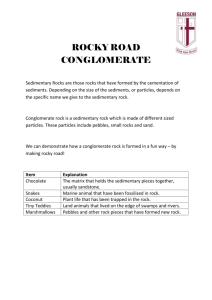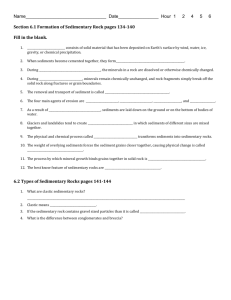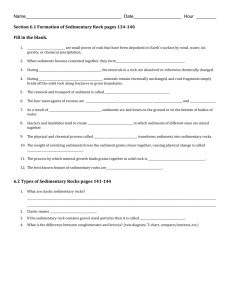Formations of Sedimentary Rocks
advertisement
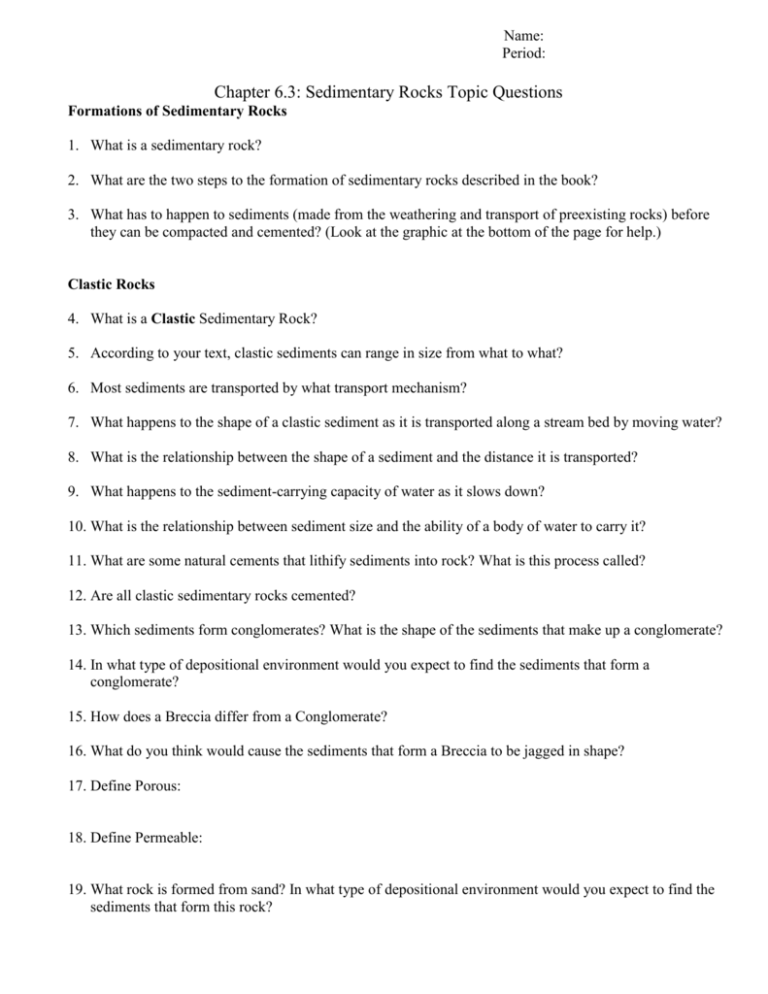
Name: Period: Chapter 6.3: Sedimentary Rocks Topic Questions Formations of Sedimentary Rocks 1. What is a sedimentary rock? 2. What are the two steps to the formation of sedimentary rocks described in the book? 3. What has to happen to sediments (made from the weathering and transport of preexisting rocks) before they can be compacted and cemented? (Look at the graphic at the bottom of the page for help.) Clastic Rocks 4. What is a Clastic Sedimentary Rock? 5. According to your text, clastic sediments can range in size from what to what? 6. Most sediments are transported by what transport mechanism? 7. What happens to the shape of a clastic sediment as it is transported along a stream bed by moving water? 8. What is the relationship between the shape of a sediment and the distance it is transported? 9. What happens to the sediment-carrying capacity of water as it slows down? 10. What is the relationship between sediment size and the ability of a body of water to carry it? 11. What are some natural cements that lithify sediments into rock? What is this process called? 12. Are all clastic sedimentary rocks cemented? 13. Which sediments form conglomerates? What is the shape of the sediments that make up a conglomerate? 14. In what type of depositional environment would you expect to find the sediments that form a conglomerate? 15. How does a Breccia differ from a Conglomerate? 16. What do you think would cause the sediments that form a Breccia to be jagged in shape? 17. Define Porous: 18. Define Permeable: 19. What rock is formed from sand? In what type of depositional environment would you expect to find the sediments that form this rock? 20. What type of rock is formed from silt and clay (mud)? In what type of depositional environment would you expect to find the sediments that form this rock? Chemical Rocks 21. Define Chemical Rock: 22. What does “precipitate” mean? 23. What causes dissolved minerals to precipitate? 24. Name three chemical sedimentary rocks. Organic or Biochemical Rocks 25. Organic rocks from from: 26. Common organic rocks include: 27. Organic Limestone is formed from what? 28. What is the rock Coquina made of? In what environment might this rock be formed? Features of Sedimentary Rock 29. The presence of what feature is a good indication that a rock is sedimentary? 30. What is a bedding plane? 31. When would bedding planes not be horizontal to one another? Ripple Marks and Mud Cracks 32. What is a “ripple mark”? 33. What forms ripple marks? 34. Rocks that contain ripple marks once were on the surface in what two different types of environments? (both are not in water) 35. In what type of natural environments might you find mud cracks? What would the presence of mud cracks preserved in rock tell you about the environment in which they were formed? Nodules, Concretions and Geodes 36. An example of a nodule that was very useful to stone age humans is: 37. What mineral characteristic made this rock so useful? 38. How does a geode, nodule or concretion form?



